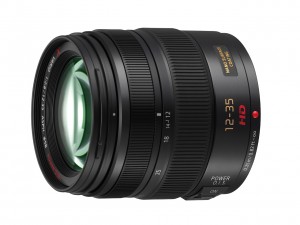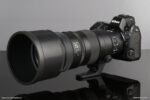In the Micro 4/3 world this past week has seen the official announcement of two lenses that had been previewed some time back by both Olympus and Panasonic. This week saw the official announcements and pricing information. On Monday, Panasonic released their 12-35mm f/2.8 standard zoom, while Olympus announced the 75mm f/1.8 on Thursday. You can read the press release for the 12-35 here, and the 75mm f/1.8 here.
Panasonic 12-35mm f/2.8

Monday finally saw the release of the long awaited fast standard zoom that Panasonic has been previewing for quite a long time. It’s a 12-35mm with a constant f/2.8 aperture. The focal length corresponds to the field of view a typical 24-70mm lens has on a full frame camera. This is a versatile range, allowing a near ultra-wide field of view on the short end and a short portrait length on the long end. It has a constant f/2.8 aperture and at least some rudimentary weather sealing (so those with an Olympus E-M5, currently the only weathersealed Micro 4/3 camera, can take advantage).
Then they announced the price: $1,300. That’s pretty steep for a Micro 4/3 lens…in fact it’s the most expensive lens for the system yet announced. A lot of people are up in arms over the price, and I’m somewhere in the middle. I think for the system, a price of around $1,000 makes more sense, but $1,300 isn’t insane.
Early reviews are showing this lens to be a truly stellar performer, right from f/2.8. In fact, it’s looking like one of the sharpest f/2.8 standard zooms for ANY camera system. Now, those who feel the need to bang on depth of field equivalence will cry “but it only gives depth of field similar to f/5.6 on full frame! What a ripoff!” Well, I think that’s an irrelevant argument for a few reasons.
1. Users of Micro 4/3 know we give up some depth of field control in exchange for the smaller size of both camera bodies and lenses. There is no need for Micro 4/3 lenses to be ‘equivalent’ in depth of field to their full frame counterparts.
2. It’s still an f/2.8 lens. Exposure values will be the same as on any other format. (And yes, I know that less total light hits the sensor than an f/2.8 lens on full frame just because of the area of the sensor…again, this is inherent in the format.)
3. Name an f/5.6 standard zoom that has anywhere near this level of performance. Can’t come up with one? That’s because it doesn’t exist.
Anyway, I will likely not ever purchase this lens simply because I’ve never been a big standard zoom user. I much prefer to use prime lenses in this range, and so I’ve generally had my standard zooms languish on the shelf (which is why the only one I own now is the super-cheap, but relatively decent, 14-42 kit zoom for my E-M5. It does great when I do need it, but I don’t have a bunch of money tied up in a lens I rarely use). However, this kind of lens is great to finally have for the system. The real strength of Micro 4/3 has been its lenses, and Panasonic looks to be continuing the trend here. For those who need a high quality fast zoom, it’s great to finally have one here.
Next, the Olympus 75mm f/1.8:





Leave a Reply